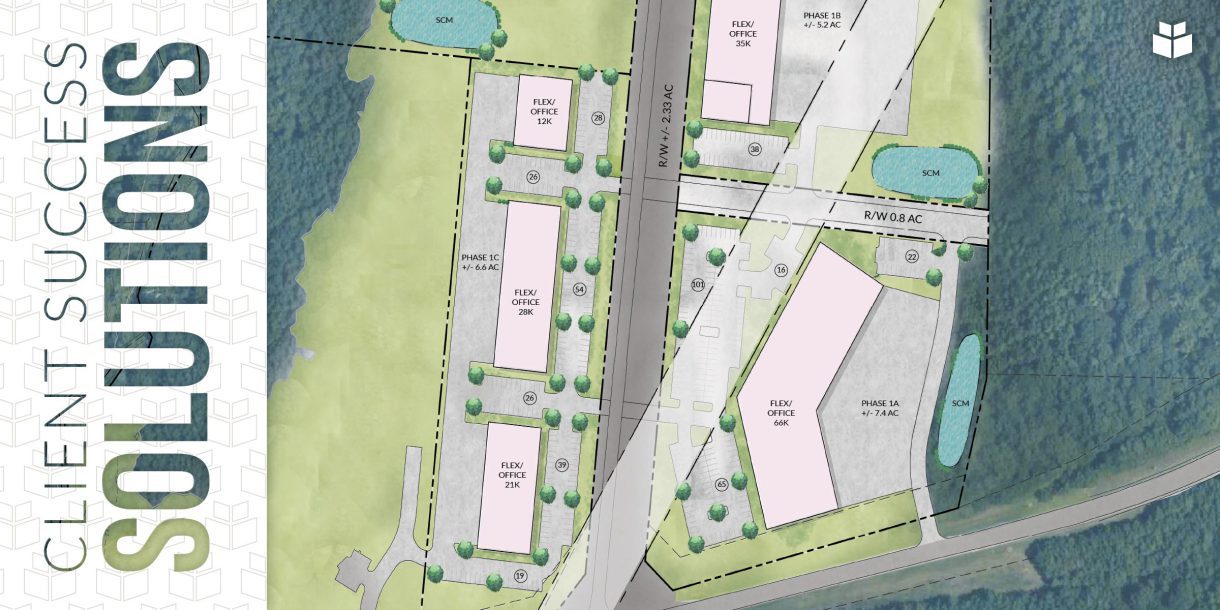
Commercial real estate offers options for office seekers and spaces for tradespeople. But where should a business owner look when they need both? The answer is tech flex. There is an increase in this type of use in the market, and the Triangle in particular is struggling to keep pace with demand. Smart developers are looking for opportunities to help more small businesses get their start and grow with tech flex.
What is tech flex?
Tech flex is a building type that contains a mix of offices and light industrial uses, often within the same unit. It provides areas suited to working on a computer and to working on a product, prototype, or piece of equipment. A typical unit has a more open floor plan, high-ceilinged bays, and durable finishes.
Businesses commonly found in tech flex settings include cabinet and tile making, metal fabrication and machining, small law firms and individual attorneys, mechanics, auto body shops, and equipment rental companies.
Tech flex buildings often have a single owner who leases units to tenants, although condominium-style ownership is also an option. The buildings themselves are usually single-story structures with simple facades and low parking volume in terms of size and configuration, think less “strip shopping mall” and more “mini storage facility.”
Why choose tech flex?
For small business owners, tech flex is an economical choice. A small footprint means lower utility bills, and a leased space in a multi-unit building means groundskeeping and maintenance costs are shared among tenants and handled by the owner. For businesses with unusual or unique space needs, it is far cheaper than the alternative build-to-suit.
Likewise, it offers significant advantages to developers. The modest scope lends itself to a predictable and efficient process. It slots easily into parcels that may be off the beaten path, since tenants attract less traffic and rely less on visibility than the average retailer. Older shopping centers that may not have been fully developed can be converted to this use.
What are the challenges and solutions?
WithersRavenel has identified five main challenges when taking on a tech flex project:
- Vision – The goals of the project must be defined quickly and clearly because the go/no-go decision happens very early. These goals should be achievable rather than aspirational: tech flex is designed to be an affordable solution, not a groundbreaking one.
- Budget – To keep the final price accessible and attractive to small business owners, the budget cannot absorb major changes or curveballs. Keep expectations and changes in check.
- Zoning – The flexible nature of these buildings can be a stumbling block depending on how comprehensive local zoning codes are. A zoning and entitlement specialist can help smooth this process.
- Stormwater – Whether you convert an existing building or build from scratch, these properties involve large impervious areas. Finding stormwater management solutions that do not eat into valuable parking space is key.
- Perception – Tech flex spaces can provoke neighborhood trepidation around increased traffic and aesthetics. Having a public outreach plan can go a long way toward easing these concerns.
WithersRavenel has expertise to assist in all five of these areas. Our engineers, planners, and surveyors can support a tech flex project with environmental due diligence, site plans, zoning and entitlements, and construction administration. For more information, contact Director of Commercial/Multi-Family Development Tucker McKenzie at (919) 238-0334 or tmckenzie@withersravenel.com.
